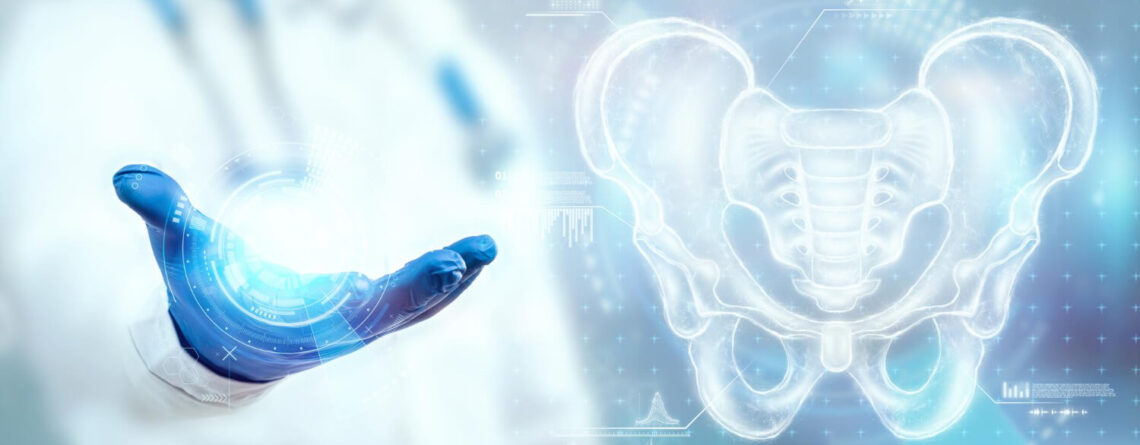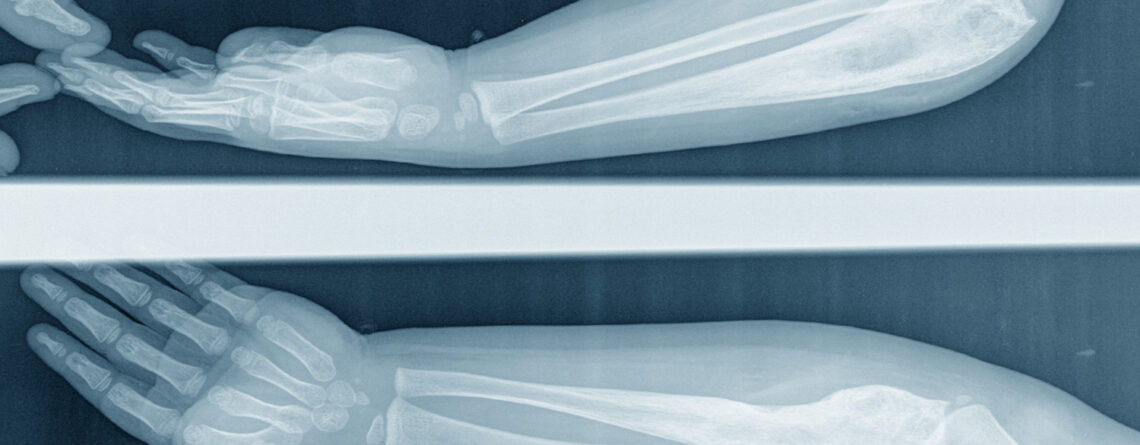All children are distinguished by high physical activity: they run, jump, dance – hey do not sit still for a minute. And that's normal. You need to think about your child's health if, on the contrary, he avoids active games, complains on pain in his legs or hands. If these complaints are repeated systematically, child should be shown to a specialist – pediatric orthopedic traumatologist. Because this is how bone neoplasms in children, which are extremely dangerous for health and life, can manifest themselves. Among them osteosarcoma, Ewing's sarcoma, chondrosarcoma are the most common.
If your child has a suspicion of one of these serious diseases or has already been diagnosed with one, do not delay and do not waste time, seek professional help from specialists of Pediatric Oncology Department Maimonides Multidisciplinary Medical Center. Our department closely cooperates with the best Israeli children's oncology centers.
Pediatric Oncology Project is managed by doctor Serhiy Postovsky directly from Israel. Together with the head of Pediatric Oncology Department Maimonides Medical Center, Dr. Yuriy Tymoshchuk , takes an active part in management of each individual clinical case directly from Israel. Thus, in Ukrainian conditions, you can get all the advantages of modern patient-oriented Israeli medicine.

Malignant bone neoplasms treatment is an expensive process. Knowing this, we have ensured that our patients have access to financial assistance in difficult cases. Maimonides Clinic works under the patronage of “Keren Or for our Child” the Charitable Foundation. Thanks to help of many organizations and simple caring people, children with severe pathology get access to modern and effective treatment.
All our doctors are highly qualified, have completed internships in the best children's oncology centers in the world, and are guided by modern recommendations and global treatment protocols in their work. At the same time, they practice an individual approach to each small patient. Diagnostic and treatment process is built on basis of modern evidence-based medicine, but taking into account each sick child characteristics, the stage of process, age and general state of health, and wishes of parents or custodians.
Treatment of malignant bone neoplasms is a complicated task, so a whole multidisciplinary team is involved in decision-making process. Children's oncologists, orthopedic traumatologists, surgeons, radiation therapists, chemotherapists, pediatricians, rehabilitation specialists, psychologists and other narrow specialists work in department. All decisions regarding selected treatment scheme are made consularly, taking into account the smallest features of child and his illness.
Sarcomas are very complicated malignant tumors not only in terms of treatment, but also diagnosis. In many countries, there are not so experienced pathologists who can immediately establish the correct diagnosis. Often tumor is confused with other similar types of neoplasms, which leads to significant delay in treatment, and sometimes to completely incorrectly selected therapy regimen.
In Israel, in our pathology department, Dr. Osnat Sher (Director of Bone and Soft Tissue Pathology Department) reviews (audits) all post-biopsy histological specimens. Especially often, she has to review questionable samples when diagnosis cannot be determined by doctors at initial stage of diagnosis. Thanks to Dr. Sher, it is possible to start the correct treatment in all cases of bone and soft tissue neoplasms, her diagnoses are always 100% accurate.
Types of bone tumors in children
All bone neoplasms can be divided into primary (growing primarily in bone)and metastatic (secondary damage to bones by metastases against background of malignant tumor of another location). Also, all bone neoplasms can be divided into benign (slowly growing, do not metastasize, have a benign prognosis, often do not require treatment) and malignant (rapidly growing and metastasizing, require complex treatment, have a serious prognosis).
The most common types of malignant primary tumor lesions of bone tissue:
- Multiple myeloma . This is the most common variant of malignant tumor localized in bones. It has special features – it is a tumor from bone marrow cells, not bone tissue, which is primarily localized in bones. It is relatively rare in children. Hematologists Oncologists treat multiple myeloma.
- Osteosarcoma (osteogenic sarcoma) . Takes the 2nd place in frequency of spread among all primary bone tumors. It is distinguished by a high degree of malignancy, often affects children aged 10 and over, although it can develop at any age. The most frequent localization is knee joint area or other tubular (long) bones. It can metastasize to other internal organs and bones.
- Adamantimoma. It is rare (less than 1% of all malignant bone tumors). The most frequent location is lower leg. Most often it affects teenagers and young people. Adamantimoma develops slowly, rarely metastasizes, so it has a relatively benign course. Requires radical surgical treatment.
- Chondrosarcoma . This is a malignant neoplasm of cartilaginous tissue. They rarely occur in children, older people are affected. Chondrosarcoma most often affects flat bones, but tumor can also occur in tubular bones. It has a benign prognosis with timely diagnosis and application of radical surgical treatment.
- Chordoma . This is a rare tumor that develops from remains of embryonic chord. It is localized at the ends of spinal column – in area of skull base or in coccyx-sacral area. It has a long, relatively benign course, rarely metastasizes.
- Ewing's sarcoma . A malignant and highly aggressive tumor that often affects children. It mainly occurs in area of long tubular bones, although any bones can be affected. Treatment of the disease is complex – surgery, radiation therapy and chemotherapy. With timely diagnosis and appropriate treatment, the majority of patients can be saved, even in metastases presence.
- Fibrosarcoma . Its characteristics and course are very similar to osteosarcoma.
- Bone lymphoma . This tumor is also called reticulosarcoma. It almost never occurs in children.
- Malignant giant cell tumor . The course is similar to osteosarcoma, but differs in resistance to radiation therapy. It is extremely rare.
Among Benign bone neoplasms in children may include:
- benign giant cell tumor of bone,
- chondroblastoma,
- chondromyxoid tumors,
- enchondroma,
- chondroblastoma,
- chondromyxoid fibroma,
- osteochondroma,
- osteoid-osteoma,
- bone cysts.

Symptoms of bone tumors in children
Unfortunately, there are no specific symptoms of tumor process development inside bone. It is necessary to suspect something wrong in following cases:
- persistent pain syndrome in bones or joints area;
- swelling in certain area of bone, "bulge" presence where it should not be;
- impairment of limb function, for example, mobility limitation;
- limping on one leg;
- sparing a certain limb;
- frequent fractures, fractures without significant applied force should be especially alarming, for example, falling from a height of one's own height.
If you notice one or more signs in your child, feel free to contact the doctors of our clinic for help . Our specialist will carefully examine the child, disprove your fears if there is no problem, and make up necessary follow-up examinations plan if there is a suspicion of bone tissue neoplasm.
Modern diagnostic methods of bone neoplasms in children
Patients with suspicion of malignant and benign neoplasms need accurate and high-quality diagnosis, because the success of subsequent treatment program largely depends on it. In Pediatric Oncology Department, we use only modern diagnostic equipment of expert class.
Examination program includes:
- Patient’s examination, medical and life history collection (determination of possible disease causative factors).
- Various blood tests.
- Neoplasm biopsy with followed histological evaluation and other innovative molecular genetic examination methods.
- Modern medical imaging techniques are the basis of bone tissue neoplasms diagnosis. They use such procedures as CT, MRI with and without contrast, innovative devices for PET CT, PET-MRI.
All diagnostic procedures are also performed in subsidiary institutions of Maimonides Clinic under close supervision of Israeli specialists, where the samples of each patient and, if necessary, the child himself and his parents or custodians are sent.
If the child needs a biopsy during the diagnostic process, then such a procedure is performed under general anesthesia so that little patient does not feel pain, fear or any other psychological discomfort.
All biopsy specimens are sent for revision to the best pathogistological laboratories of USA, Israel, and Germany . Thanks to such double checks, we are absolutely sure of diagnosis correctness and adequacy of subsequent treatment scheme.
Another feature of diagnostic process in our clinic is innovative molecular genetic diagnosticsperformance. All biopsy materials are tested using genetic panels such as Foundation One and Caris Molecular Testing. These tests make it possible to determine certain types of mutations in tumor cells, as well as certain receptors presence on the surface of these parasitic cells. These data are subsequently used to create individual immunobiological therapy drugs or to select target therapy drugs. In modern medicine this approach is called personalized oncology . Our patients have access to all benefits of this innovative treatment.

Innovations in treatment of bone tumors in children
Bone tissue tumors, especially malignant ones, are serious diseases with a serious prognosis. Therefore, in our Pediatric Oncology Department, making up a treatment plan is far from just one specialist. A whole multidisciplinary team works on each clinical case. Children's oncologists, orthopedic traumatologists, surgeons, radiation therapists, chemotherapists, pediatricians, rehabilitators, physical therapists, psychologists and other necessary narrow specialists provide assistance to every small patient. A decision on one or another treatment method is made only on a consultative basis, and all its advantages and disadvantages are evaluated.
For small patients with oncological orthopedic diseases, the most modern surgical procedures are available. All surgical interventions are performed according to organ-sparing surgery principle. That is, amputations are performed only in extreme cases, when there is no possibility to save the limb.
Modern surgical procedures in patients with bone tumors:
- vertebroplasty and osteoplasty under computer navigation control;
- cryoresection of bone tissue tumors;
- excochleation of bone tissue cystic neoplasms;
- microsurgical reconstruction of blood vessels, bones and soft tissues;
- radiofrequency thermal ablation of bones and soft tissues tumor lesions;
- and other high-tech, minimally invasive effective methods.
If in treatment course, child needs affected limb amputation or other affected part of skeleton, then in future, reconstructive and plastic surgeries , interventions for endoprosthetics of joints must be performed.
Such innovative procedures make it possible to restore the formed tissue defect that arose after initial stage of surgical treatment. An example of such surgeries is prosthetics of sternum and ribs, individual vertebrae, pelvic bones, etc. Bone grafts are made in accordance with individual needs of each child using the most modern technologies – 3D printing.
Treatment complex of bone tissue malignant neoplasms necessarily includes radiation therapy . As a rule, for orthopedic oncology diseases, remote radiation therapy is used with the help of modern devices – linear accelerators. Radiotherapy can be given before or after surgery. Sometimes radiotherapy is used as the main treatment method when surgery is not indicated or it is not possible to perform it.
Chemotherapy is one of the main treatment methods of malignant bone tumors and sarcoma. In our clinic, only effective and safe chemotherapy drugs of the most famous manufacturers are used. Thus, we are sure of positive result from received treatment cours, while facing only minimal side effects.
Modern targeted drugs and other drugs of immunobiological action are also used in complex treatment of bone neoplasms. All these drugs are selected individually for each patient in accordance with the type of his tumor, certain genetic markers of tumor cells determined at the stage of diagnosis, stage of process and individual characteristics of each child. The main difference from classic chemo medicine is the effect only on tumor cells, while healthy surrounding cellular elements are not damaged. This is due to significantly lower number of side effects and complications when using immunobiological drugs.
Another treatment advantage at Maimonides Medical Center is the opportunity to participate in clinical trials of experimental drugs or procedures . For some patients, this is the only real chance for a full recovery, especially for those children in whom standard treatment methods did not significantly improve the situation.

